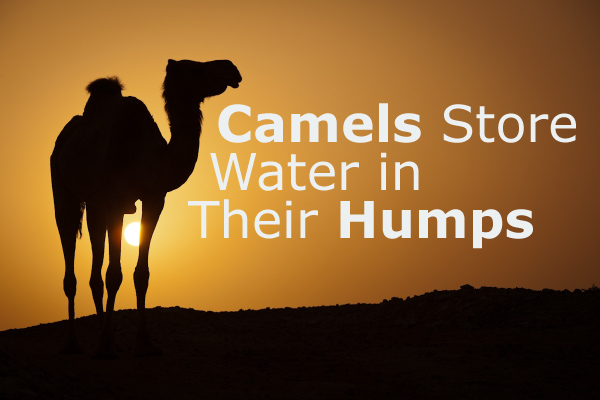Do camels store water in their humps?
Camels are superbly adapted for desert life. To protect against dust storms, they can close their nostrils, and they have extra hair around their ears and eyes. They don’t sweat until their body temperature exceeds 105 degrees Fahrenheit. And, most famously, they can go for days or even weeks without a drop of water.
There are two species of camel still in existence, the Arabian, which has one hump, and the Bactrian, which has two humps. The Arabian is leaner and faster, but the sturdier Bactrian can carry heavy loads for great distances.
Given that camels can go for long periods without water, and when they do drink they can consume over 20 gallons in ten minutes, it is natural to assume that the Camel’s most unique feature, its hump(s), are where the water is stored.
The hump, which can weigh up to eighty pounds, is actually composed primarily of fat. Its purpose is the same as for other animals (and humans) – it is used as an energy reserve when food is unavailable. Humans store fat in their beer bellies and love handles, camels store it in their humps. After a long-enough period of time without food, the camel’s hump will shrink and eventually flop to the side when nearly depleted.
The real reason camels can go so long without water is not their humps, but their unique physiology. As mentioned above, camels tend not to sweat away their water supply. Also, they urinate infrequently and their body can recycle the urine rather than excrete it. Their feces contain so little water that the round, dry pellets can be burned as fuel! During the summer their coats become lighter to reflect more of the intense desert sun. Finally, camels can lose 25% or more of their body weight with no ill effects.




